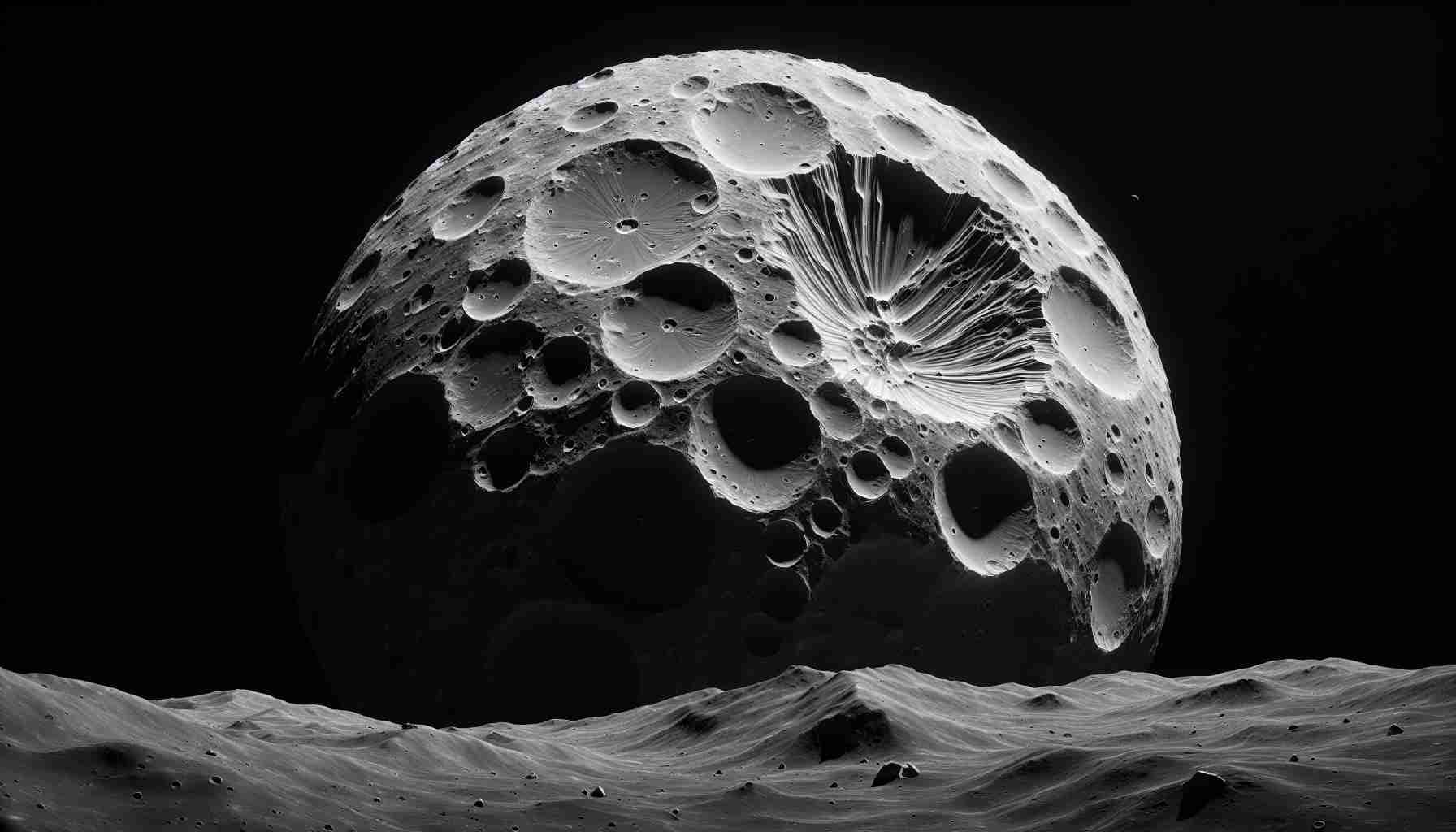- A colossal asteroid collision shaped two significant canyons on the Moon’s far side, occurring 3.8 billion years ago.
- The impact unleashed energy equivalent to 130 times the global nuclear arsenal, demonstrating the force of cosmic events.
- NASA’s Lunar Reconnaissance Orbiter provided crucial data for mapping the Schrödinger impact basin and the canyons, Vallis Planck and Vallis Schrödinger.
- Vallis Planck is 174 miles long and 2.2 miles deep, while Vallis Schrödinger is 168 miles long and 1.7 miles deep.
- Future NASA missions may explore these ancient canyons, potentially uncovering rocks that reveal the Moon’s geological history.
- The research highlights the Moon’s past, including the possibility of a magma ocean and resources for future human exploration.
In an incredible revelation, scientists have uncovered that a colossal asteroid collision, which occurred 3.8 billion years ago, shaped two massive canyons on the Moon’s far side in under 10 minutes. Imagine this: debris from a meteor strike unleashing an energy blast equivalent to 130 times the world’s nuclear arsenal!
Utilizing data from NASA’s Lunar Reconnaissance Orbiter, researchers meticulously mapped the impact site known as the Schrödinger impact basin, where the canyons, named Vallis Planck and Vallis Schrödinger, resemble the Grand Canyon in size. Vallis Planck stretches 174 miles long and digs 2.2 miles deep, while Vallis Schrödinger is 168 miles long and reaches depths of 1.7 miles.
The force of the asteroid, estimated at 15 miles in diameter, threw debris across the surface of the Moon at speeds of up to 2,200 miles per hour, carving out terrain shapes in mere moments. This ancient impact happened during a frenetic period known as the heavy bombardment of the inner solar system, radically altering the Moon’s landscape.
As NASA plans future missions to the Moon’s south pole, these ancient canyons could provide access to untouched rocks that reveal secrets of our celestial neighbor’s history, including the hypothesis that the Moon once hosted a magma ocean.
This extraordinary discovery not only boosts our understanding of lunar geology but also sets the stage for future explorers. Could the Moon’s icy shadows harbor vital resources for human exploration? Only time—and further research—will tell!
Massive Asteroid Collision Unveils Moon’s Secrets: What You Need to Know!
The Astounding Impact of the Schrödinger Crater on Lunar Geology
Recent findings have shed light on a colossal asteroid collision that occurred 3.8 billion years ago, which dramatically shaped the Moon’s far side and created immense canyons in a remarkably short time. Researchers utilized data from NASA’s Lunar Reconnaissance Orbiter to investigate the Schrödinger impact basin, where the canyons known as Vallis Planck and Vallis Schrödinger reside.
Key Features of the Vallis Planck and Vallis Schrödinger
– Vallis Planck
– Length: 174 miles
– Depth: 2.2 miles
– Vallis Schrödinger
– Length: 168 miles
– Depth: 1.7 miles
These canyons are similar in scale to the Grand Canyon and were formed when debris from a meteor impact released energy equivalent to 130 times the atomic arsenal of the world, an explosion that occurred in mere moments and shaped the lunar landscape dramatically.
Important Questions About This Discovery
1. What are the geological implications of the Vallis canyons for lunar exploration?
The canyons are expected to offer crucial insights into the Moon’s geological history. By studying the untouched rocks within these formations, scientists hope to uncover evidence of past volcanic activity and the Moon’s potential magma ocean, enhancing our understanding of its evolution.
2. How might these findings impact future lunar missions?
Future missions, especially those geared towards exploring the Moon’s south pole, could leverage the geological features of Vallis Planck and Vallis Schrödinger to investigate resource availability, such as water ice, which is essential for sustained human presence on the Moon.
3. Are there any potential resources located within the canyons?
Yes, scientists speculate that these canyons could harbor vital resources. The Moon’s shadowed regions may contain frozen water, which is crucial for life-supporting conditions and could be utilized as fuel for future exploration missions.
Trends and Insights
The discovery of the Vallis canyons not only serves to enhance our knowledge of the Moon’s geological past but also speaks to the broader implications for space exploration and mining. As countries and private companies gear up for lunar missions, the Moon’s features will be critical for assessing its habitability and potential as a resource hub.
Innovations in Lunar Research
With advancements in technology such as the Lunar Reconnaissance Orbiter and upcoming missions, our ability to map and understand lunar geology has improved exponentially. This can lead to innovative approaches in future lunar exploration, tapping into the Moon’s potential resources while ensuring sustainability.
Security and Sustainability Considerations
As the prospect of lunar mining becomes more tangible, discussions about the security and sustainability of these operations will become increasingly relevant. International agreements on space resource utilization may need to be revisited to ensure that any activity remains safe and respectful of these celestial resources.
Conclusion
The findings regarding the Vallis canyons illuminate an important period in lunar history and offer promising avenues for future research and exploration. The collective knowledge gained could pave the way for human habitation and utilization of lunar resources in the near future.
For more about lunar exploration and developments, visit NASA.
